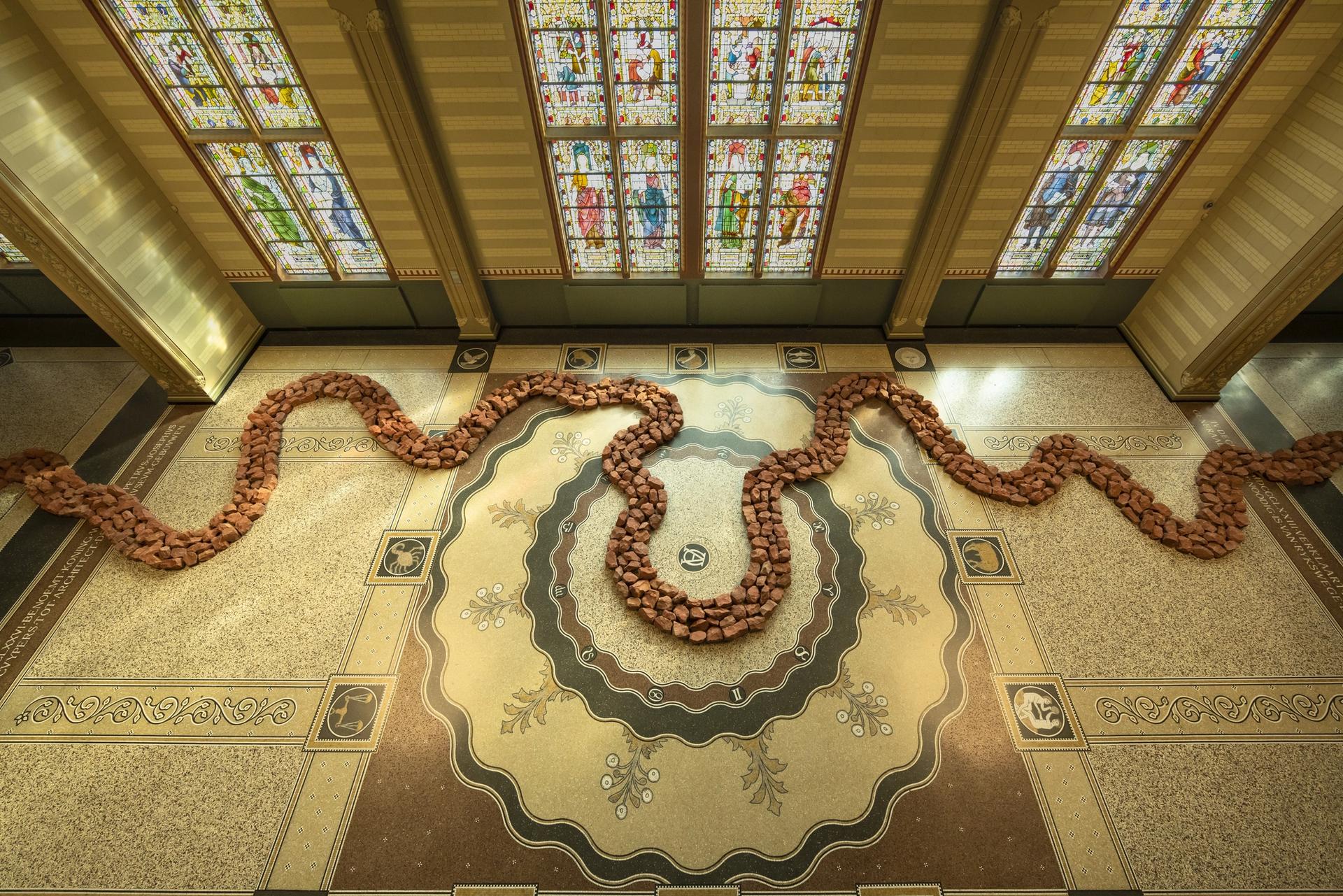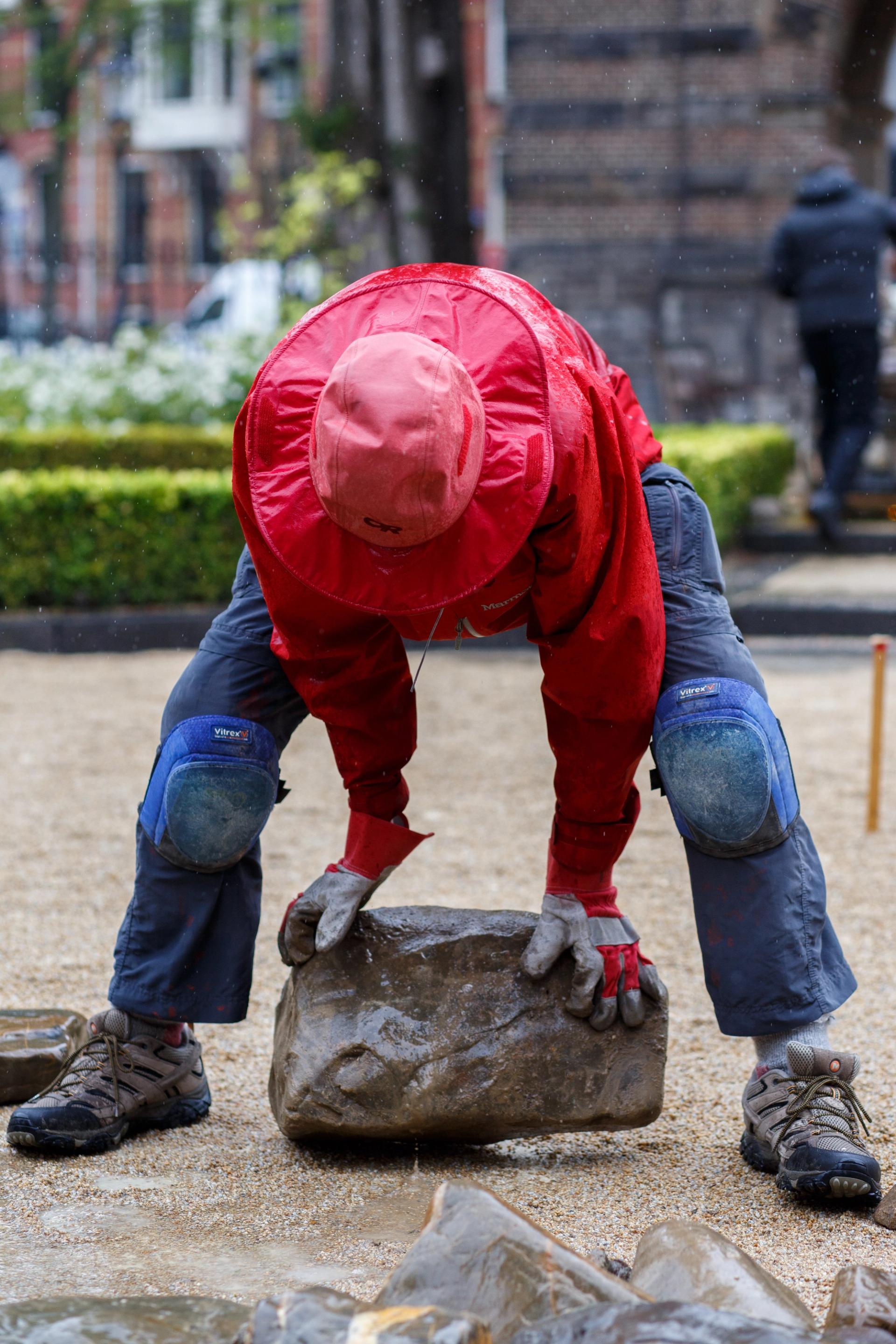The latest sculptural exhibition at the Rijksmuseum in Amsterdam – eight works by contemporary English artist Richard Long – makes the playful art of the lawns and rocks of the Museum of the River Meuse accessible to all (but not to be stepped on).
Opening May 26 and running through October 29, Richard Long in the Rijksmuseum Gardens is the tenth in a series of free sculptural exhibitions outside the National Museum of the Netherlands, which have been made possible by largest donation ever made by the museum. of €12.5 million.
Six new works of art carved from grass and stone standing in the shadow of Pierre Cuypers’ monumental 19th-century building seem conversely, according to Rijksmuseum director Taco Dibbits, unassuming. “Ten years ago we held the first garden exhibition, and this year’s is very unusual, almost modest, by Richard Long,” he says.

Richard Long, river of stones (2018/2023)
Courtesy of the artist, the Saat Saath Arts Foundation, and Nature Morte, New Delhi, 2018 Photo: Rijksmuseum/Jannes Linders
“He talks about it like the traces we leave in the landscape, and he immediately said that he wanted to work the grass… it brings him thoughts, emotions, a grip on this primitive material. Without this donation, we would not have been able to make this exhibition.
Long, 78, who is known for making simple art by wandering through landscapes, creating photographs and books to document his interventions, says he was sort of the “last of the amateurs” to do art with his own hands. At the Rijksmuseum he mowed grass into shapes, created works by laying stones into shapes, and inside the museum’s atrium and great hall, recreated a large circle and a serpent of stones of Swiss and Indian rock on the marble floor.
“I’ve always done everything myself because it’s my pleasure,” he says. “I enjoy lifting all the stones, walking thousands of miles in beautiful landscapes, camping at night. My work is like a self-portrait of me in the world I live in. Making a monument does not interest me, the works will leave no trace.

Richard Long working on Circle of stones of the Meuse (2023)
Photo: Rijksmuseum/Kelly Schenk
In the meantime, however, there are strict instructions for gardeners to keep the grass at a specific height and to spray weeds if necessary, while the rocks on the floor of the Rijksmuseum are watched carefully by security guards to their “travel” risk.
For Long, the invitation to work in the gardens of the Rijksmuseum brings him back to his very first landscape work. “In 1966, I made a circle behind in the garden of my neighbors; I had these ideas for working in the dirt, most people had gardens, so it seemed like a no-brainer to incorporate it into someone’s garden,” he recalls. Fortunately, he adds, it didn’t bother the neighbors.
